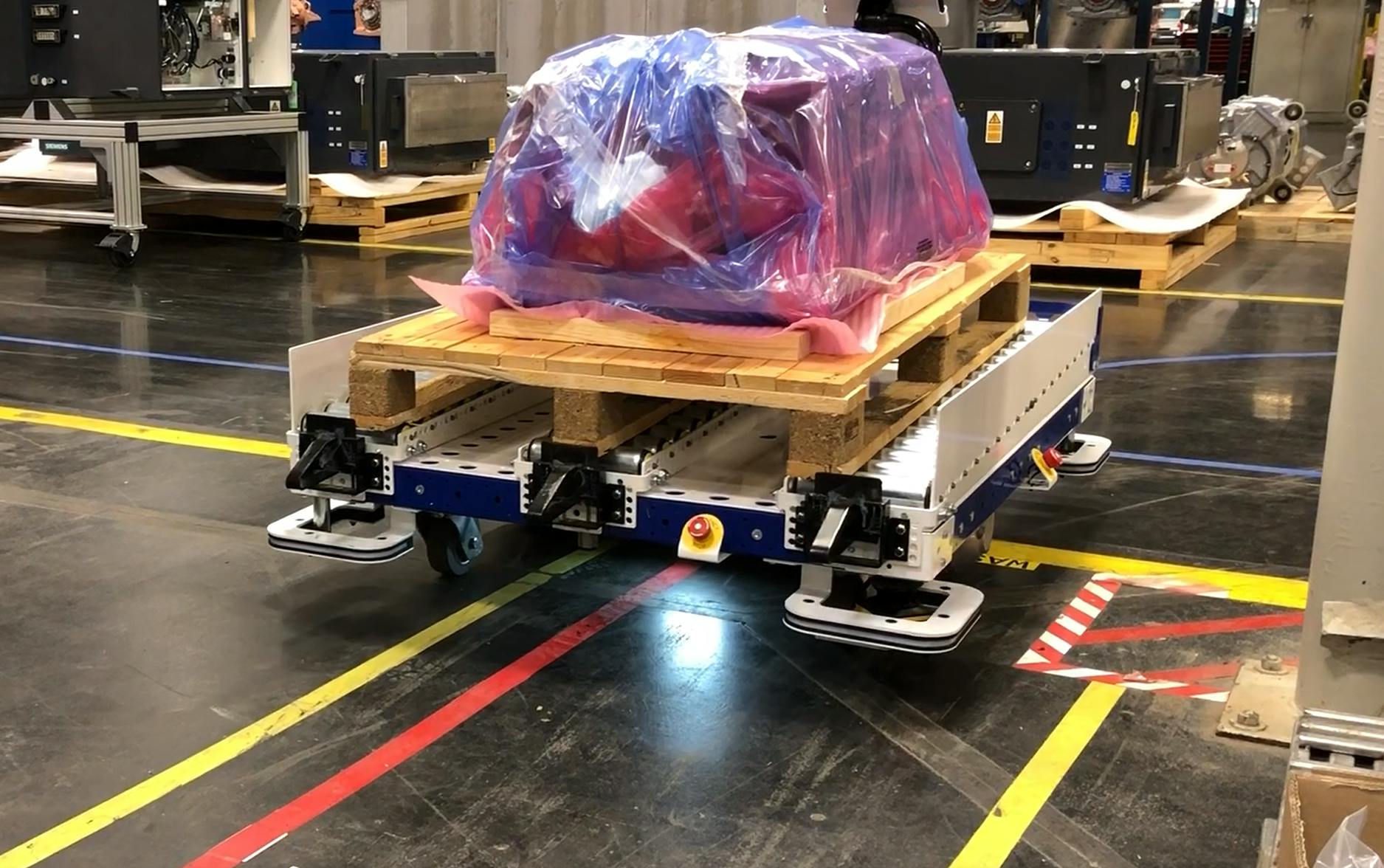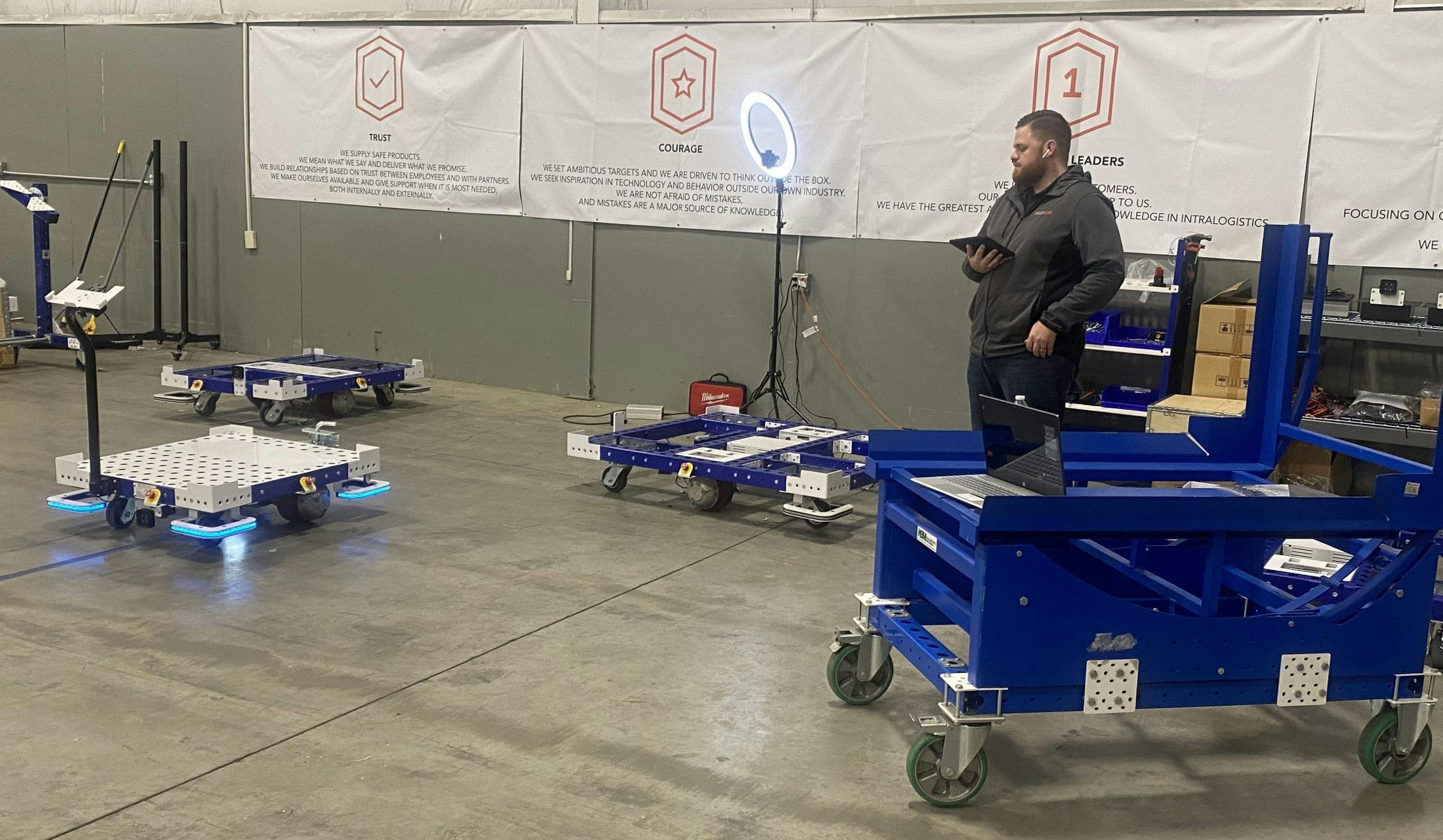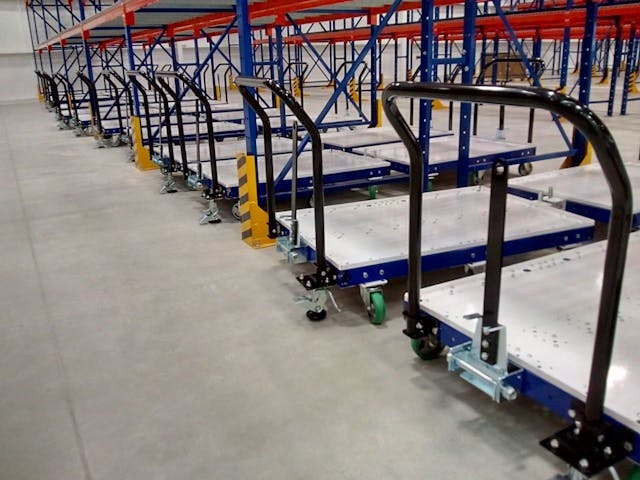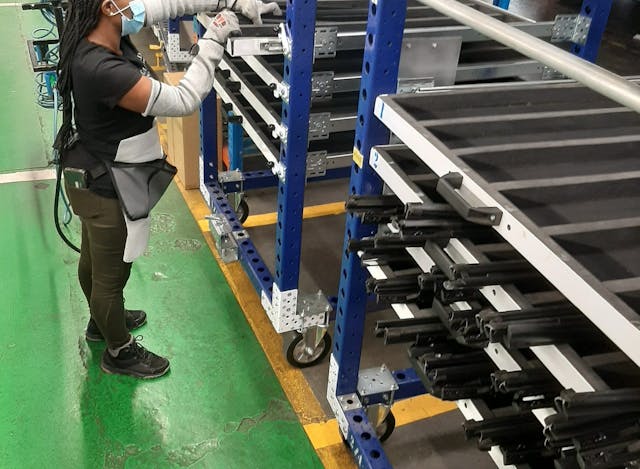Improving Productivity Using Automated Material Handling Systems

Increased consumer spending is expected once the pandemic has been effectively controlled due to pent-up demand. Increased demand means manufacturers and warehousing owners will have to expand production capacity and productivity to deliver optimized service levels.
Industrial automation, including the automation of material handling systems, provide industrial facilities with an agile solution to improve productivity to deliver optimized service levels.
Productivity within industrial facilities is calculated through several factors. These key performance indexes include the overall equipment effectiveness ratio (OEE), machine utilization, and throughput. Implementing automated material handling systems can optimize the majority of the KPIs used to track productivity, as the following examples will show.
Enhancing Productivity with Automated Material Handling
The increased adoption rate of Industry 4.0 business models means the industrial sector continues to recognize the benefits of industrial automation to optimizing industrial processes. Automated material handling systems can enhance productivity in the following ways:
Optimize Machine Utilization
Shop floor equipment does not operate in a vacuum. Multiple interrelated operations occur to ensure the machine gets the tool heads, materials, and information it is expected to work with. Inadequate material handling negatively affects the production flow and how quickly materials get to workstations, reducing machine utilization durations.
To eliminate the downtime caused by inadequate material flow or handling, automating material handling systems reduces human errors and eliminates the shop traffic that stalls material delivery. Getting materials and tools to the correct workstations ensure equipment work optimally through their work cycles and operators have the tools required to produce components.
Reduces Operational Cost
The total cost of production or warehousing includes the power expended to move materials across the shop floor and the energy material handling systems consume. For manual carts, power consumption is minimal but increased shop floor traffic can cause accidents or delivery delays which add up to the total production cost. Forklifts are also responsible for a majority of safety incidents on the shop floor and they consume a considerable amount of energy.
Automated material handling systems such as automated guided vehicles are industrial automation solutions that can carry heavy loads unlike manual carts and use less power compared to forklifts. Automated material handling systems also reduce the labor cost associated with manually moving materials across the shop floor. According to the Bureau of Labor Statistics, order pickers and material handling equipment operators are paid approximately $20 per hour. Despite the initial expenditure on purchasing an AGV, an AGV working three shifts will be more serviceable than paying 3 operators working full-time.

Supporting Lean Manufacturing Initiatives
The concept of lean manufacturing is to reduce waste at every phase of the production cycle which leads to increased throughput. The implementation of industrial automation to automate material handling leads to a more efficient material handling process. One example is the ability of automated material handling systems to accurately follow operational schedules thus ensuring materials arrive just in time.
Implementing a just-in-time material transportation process reduces queuing on the shop floor and the amount spent on waste. An optimized material handling process reduces waste in industries that handle raw materials with limited shelf lives. For example, the food and beverage industry relies on raw materials with short shelf lives that can reduce waste through an automated material handling system. The stability automation brings also ensures proper handling which limits scoffing or damage when handling sensitive materials.
Decongesting the Factory Floor
Factory floor traffic caused by the transportation of materials and tools across the shop floor is capable of causing unplanned downtime as materials take longer to reach their destination. The implementation of an automated material handling system drastically reduces shop floor traffic as heavy equipment follows a defined pathway across the factory floor. Providing operators and equipment with the tools they work with on time leads to increased productivity.
Reduces the Effects of Workforce Shortages
The manufacturing industry is going through a transitional phase as older employees retire. The younger generation expected to feel the shoes of older employees does not find jobs in the industry attractive enough to build careers. This has led to a worker shortage which must be filled for factories to improve productivity levels.
Industrial automation is a solution to reducing the effects of an aging workforce and shortages. Automating the material handling process eliminates the need for transport operators, as well as, frees up the time of the available operators. Operators can then spend the freed-up hours on other crucial activities within the factory floor.
Increased Scalability
Automated material handling systems support flexible manufacturing systems due to the scalability they offer. Expanding operations require a scalable material handling system to meet the new production capacity of the expanded facility. Automated material handling systems such as AGVs are easy to scale up compared to the application of fixed material handling systems within the shop floor.
Conclusion
An automated material handling system is crucial to implementing Industry 4.0 business models as it also supports the collection of layout data from the shop floor. The captured data can be integrated into industrial cloud platforms to develop data-driven strategies to optimize productivity. Automated material handling systems can be customized to meet a facility’s specific requirement making it easier to scale up with increased demand. You can speak to a FlexQube expert today to learn more about the application of automated material handling systems to optimize your shop floor processes.

Reach out to us!
-
U.S.
![]()


